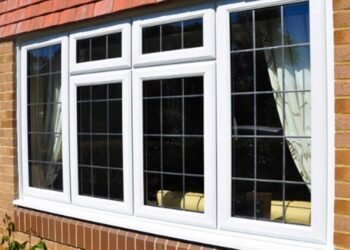Installing a new roof requires a huge upfront investment, and many people consider it an unnecessary expense. As a result, they either stall the task for several months or decide to opt for a cheaper option, compromising the quality and durability of the new roof.
If you also have the same thoughts, it’s better to get detailed clarification about the costs associated with a new roofing structure rather than making any rash calls. In this article, we have discussed the major factors that influence the cost of installing a new roof to give you a clear picture.
Labor charges and time complexity
Consider the labor charges when you choose a professional roofing contractor, like Tadlock Roofing, to get the new structure installed. The higher the number of workers, the higher the total cost. Apart from this, if the proposed project timeline is for several weeks, it will incur more expenses than a timeline of a few days.
Roofing material types
Another major factor affecting the new roofing cost is the material type you have chosen. Asphalt shingles and metal tiles usually come in medium price ranges, depending on the designs, unit sizes, and the material’s quality.
If you have a moderate budget, opting for these materials won’t let the budget go overboard. However, if you want a premium roof, the material cost might increase, especially if you choose cedar shakes, wooden planks, slates, or synthetic shingles.
Components of the roof
Tiles or shingles aren’t the only material you will need for the new roof. Apart from these, you also need to consider the price of each component to be included in completing the roof’s structure.
For example, if you include an ice and water shield or a special drip edge, the overall project cost will increase due to the component price.
Decking area and volume
If you are planning to replace rotten or moldy wooden planks forming the roof’s foundation deck, consider the cost in your budget as well. Usually, you will be able to prepare a proper estimate based on the decking area that needs to be replaced before the new roof’s installation. Furthermore, if you plan to use premium-quality wooden planks, the cost will certainly increase.
Protection and pre-arrangements
Roofing contractors need to use special protection gear to keep the property safe from the construction work. This might increase the project’s overall cost. Besides, you will also have to bear the costs of dismantling the older roof and dispersing the waste materials generated in the process.
Roof’s accessibility
Most roofing contractors add a special cost to the final invoice depending on the roof’s accessibility. For example, if the raw materials need to be carried for a longer distance from the storage area to your roof, the project’s cost will increase substantially. Similarly, if other construction structures block access to the roof, your contractor might charge you for the same.
Complexity and size of the roofing structure
Lastly, the installation cost of the new roof will depend on the structure’s complexity and the overall surface area under consideration. For example, if the new roof needs multiple openings for chimneys and skylights, the contractor will need to put in more effort, and hence the project cost will increase.
Conclusion
We have stated the seven major factors that usually influence the cost of installing a new roof. Based on these factors, you can prepare a budget estimate and then work on optimizing it for higher cost efficiency. Also, you can discuss with the roofing contractor the pricing structure and the labor charges to be incurred.












